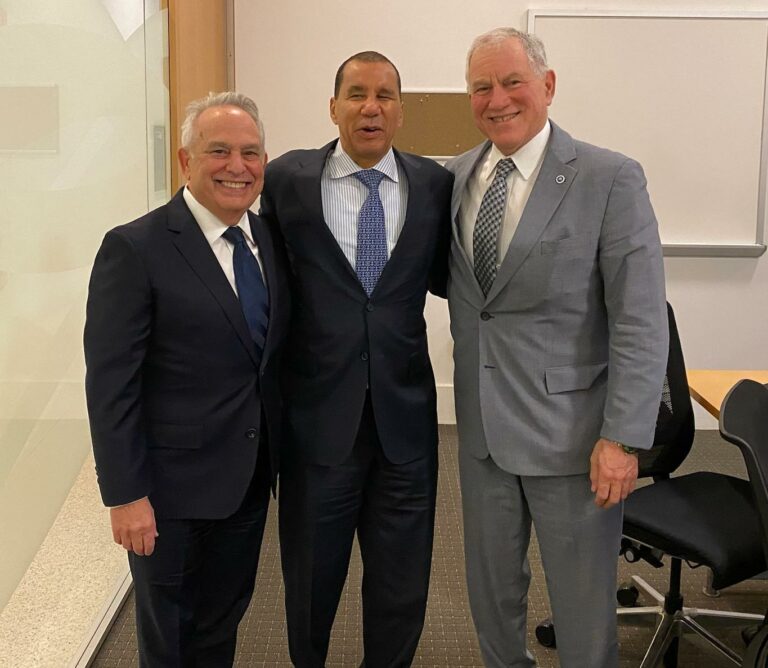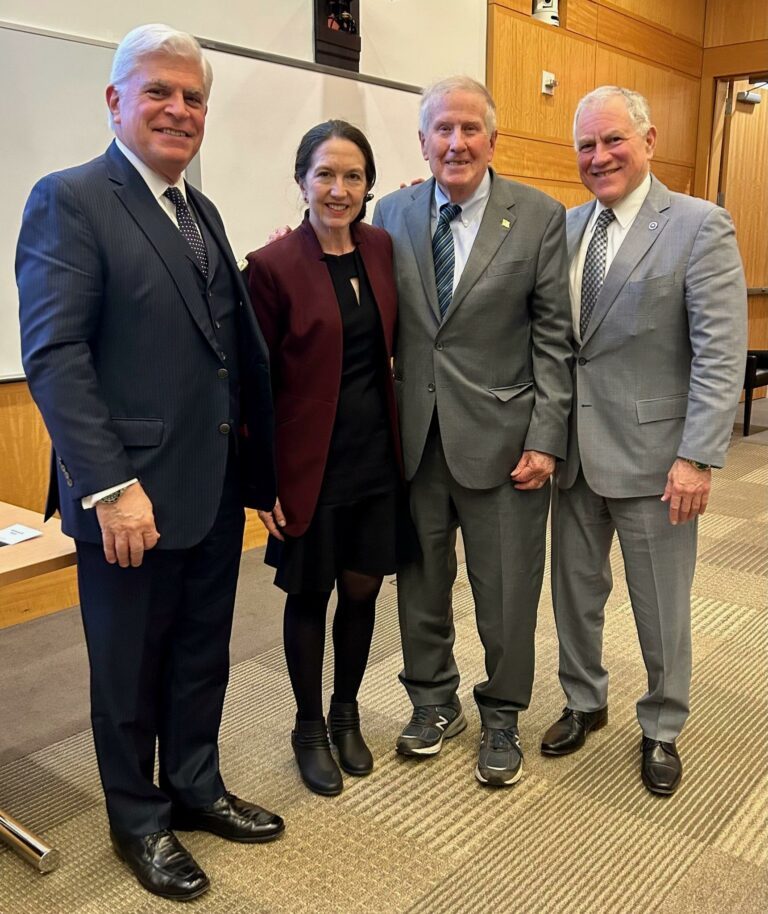Ex-Gov. David Paterson Supports NYSBA Report on Gubernatorial Succession but With Caveats
11.6.2023

Now — 15 years later — Paterson appeared at a New York State Bar Association forum at Fordham Law School to discuss what the experience taught him. Jerry Goldfeder, chair of the association’s Task Force on Voting Rights and Democracy and its Presidential Task Force, spoke with Paterson during what was billed as a fireside chat.
Goldfeder, who is also an adjunct professor at Fordham Law, asked the former governor if he approves of the gubernatorial succession recommendations of the New York State Bar Association. The association is urging the state to amend the Constitution to require legislative approval of a governor’s choice for lieutenant governor. A constitutional amendment requires approval by two successive legislatures and the voters.
At first, Paterson said he liked the idea of checks and balances on a governor’s power but he preferred letting only the Senate — not the Assembly — approve the governor’s choice.
But then Paterson started having second thoughts. What, he wondered, would happen if the Legislature was controlled by the opposite party? Would the governor’s choices all be scuttled? Would a lieutenant governor that is the antithesis of the governor be appointed?
“Now the only thing I will point out is that the lieutenant governor is working for the governor,” he said. “It’s not like the governor, say, appointing the chief judge of the Court of Appeals.”
But back in 2008, when Paterson was elevated to governor after Gov. Eliot Spitzer resigned in the midst of a prostitution scandal, it wasn’t clear who had the authority to appoint a lieutenant governor. Knowing that the Senate would challenge it, Paterson decided to move quickly to appoint Richard Ravitch lieutenant governor.
“I might have done it differently,” Paterson told Goldfeder at the forum. “But I felt my responsibility was to the people of New York State.”
By that he meant he wanted to get the state Senate moving again. The legislative body had ground to a standstill because it was split 31-31 and had no lieutenant governor to serve as a tie-breaker or clear leadership. It was similar to what happened this fall when Republicans, holding a slim majority in the House of Representatives, struggled for three weeks to elect a speaker.
But back 15 years ago, courts at first didn’t agree that Paterson had the authority to appoint Ravitch, but then in September of 2009, the state’s highest court, the Court of Appeals, reversed the lower courts, granting the governor the sole authority to appoint a lieutenant governor.
That set the stage for Gov. Kathy Hochul to appoint Brian Benjamin lieutenant governor. The vacancy occurred when she was elevated to governor after Gov. Andrew Cuomo resigned. Benjamin’s criminal indictment in 2022 led to his resignation and brought attention once again to the lack of a vetting process for the second most powerful position in New York. Eight months later, Hochul appointed Antonio Delgado, again without approval from the Legislature.
“The governor should not be the only person involved in choosing who sits a heartbeat away from the highest office in our state,” said Richard Lewis, president of the New York State Bar Association. “Two lieutenant governors were appointed in the space of eight months, and neither were confirmed by the elected body of the people of New York. We don’t want history to repeat itself.”
Alan Rothstein, co-author of the association’s report on gubernatorial succession, prepared by its Committee on the New York State Constitution, told the forum audience about the bar association’s recommendation that the Legislature be a check on the governor’s power to appoint a lieutenant governor.
But Liz Benjamin, managing director of Marathon Strategies, who sat on the same panel as Rothstein, pointed out that would be very difficult in today’s political climate.
“This strikes me as, quite frankly, a recipe for disaster,” she said. “Because you have certain political interests coming into play. I will offer the caveat that I don’t have a better option, but I think, given how riven with dysfunction so many governments are, and how polarized so many governments are, this is going to be problematic.”
In a second fireside chat, Fordham Law School Dean Emeritus John Feerick and NYSBA past President Michael Miller reminisced about Feerick’s role advocating for the 25th Amendment to the U.S. Constitution. Feerick, then a 27-year-old recent Fordham graduate, was thrust into the limelight because he had written an essay arguing that the Constitution needed a procedure for succession shortly before John F. Kennedy was assassinated.
Although Kennedy’s death didn’t lead to a constitutional crisis, Feerick’s argument gained in urgency. He was asked to serve on a commission, which eventually proposed the 25th Amendment. Congress approved the 25th Amendment in 1965, and the states ratified the constitutional amendment, completing the process in February of 1967.
“So, John, I want to tell you personally. It’s been really a great honor having this continuing conversation with you,” Miller said.







